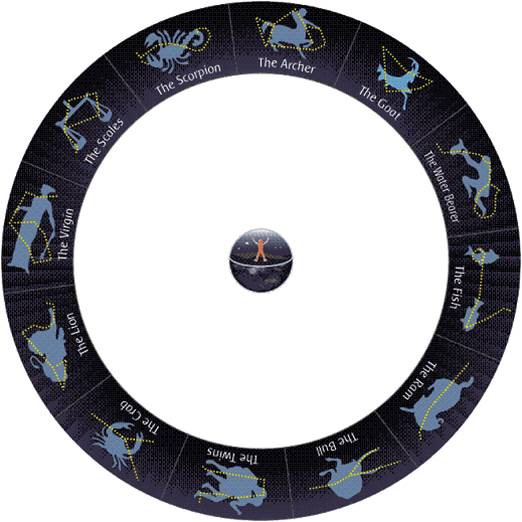
The difference between Vedic or Sidereal astrology and Tropical or Western astrology comes from different ecliptic coordinates. Tropical astrology uses the Spring Equinox as the point when the Sun moves into the 1st degree of the sign Aries. At the Summer Solstice, the Sun moves into Cancer; the Autumn Equinox begins the Sun's movement into Libra and the Sun enters Capricorn on the Winter Solstice.
Critics of astrology will say that the Sun is really in Virgo when we say it is in Leo. Western astrology does not view the background of fixed stars as a point of reference from the earth’s perspective. Western astrology uses the same reference point as that of astronomy, i.e. it divides the ecliptic into segments starting at the Vernal Equinox. In this way measurements become coordinates that apply to any point in space. Astrology is meant to offer a mandala or snapshot of the sky at birth from an unchanging reference point, much like the soul’s perspective.
Although these segments are given the same names as the fixed star constellations, the earth’s precession means that they are no longer in line with the constellations of the same name from an earth centered or Sidereal perspective. Vedic or Sidereal astrology is presented from the earth’s perspective as the planets move through the constellations overhead. However, the constellations are not actually spaced in 30 degree segments, so Sidereal astrology can't claim to be a more accurate or natural system than Tropical astrology. They are just different approaches to astrology.
Critics of Tropical astrology will say the seasonal equinoxes are flipped in the Southern lattitudes. Astrologers from Australia and even the most popular astrology software comes from Australia. They use the Tropical orientation because it works accurately in their interpretations.
Perhaps we shouldn't label the Equinox and Solstice to Northern seasonal names. The Equinox marks the time when the Sun crosses the celestial equator which happens twice a year, so it doesn't matter if it begins Spring or Autumn. The Solstice marks the time when the Sun makes another change in orientation. These are the four Cardinal points or signs that simply determine where the other signs will fall within the chart. If we used terms like the Aries Equinox or the Capricorn Solstice we might remember that we are working with symbolic archetypes and not the actual stars clusters themselves.
The earth’s precession makes planetary positions shift, but Western astrologers use the Tropical method as a constant point in space that doesn’t change. This site uses astronomical calculations, the JPL ephemeris and chart delineation based on the Vernal Equinox.
There are many differences between Western and Vedic astrology beyond reference points. Each emphasizes a different approach to the chart and understanding both can offer greater insight.
